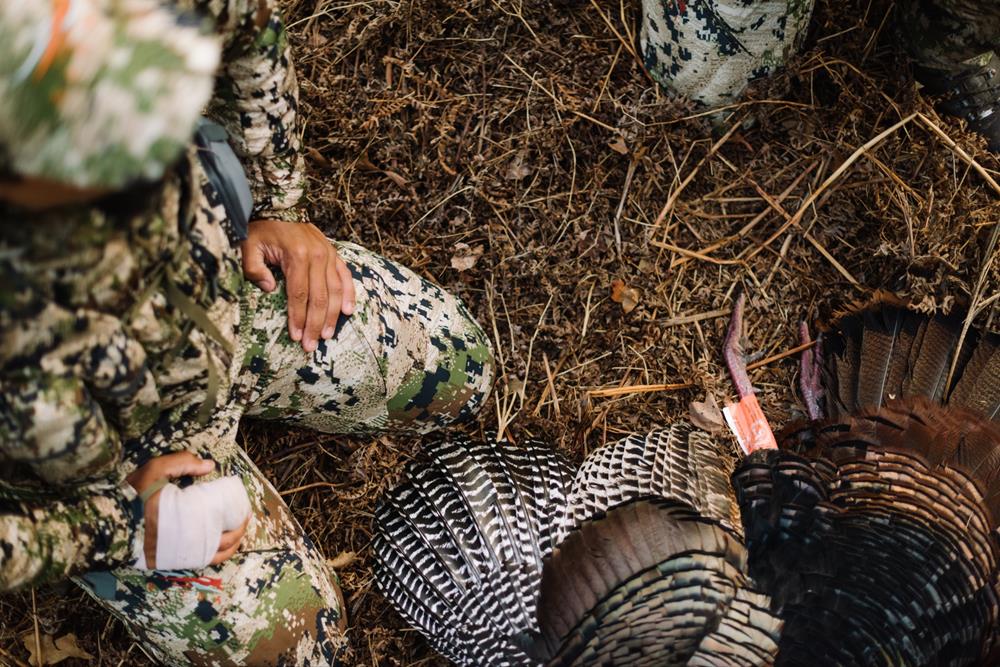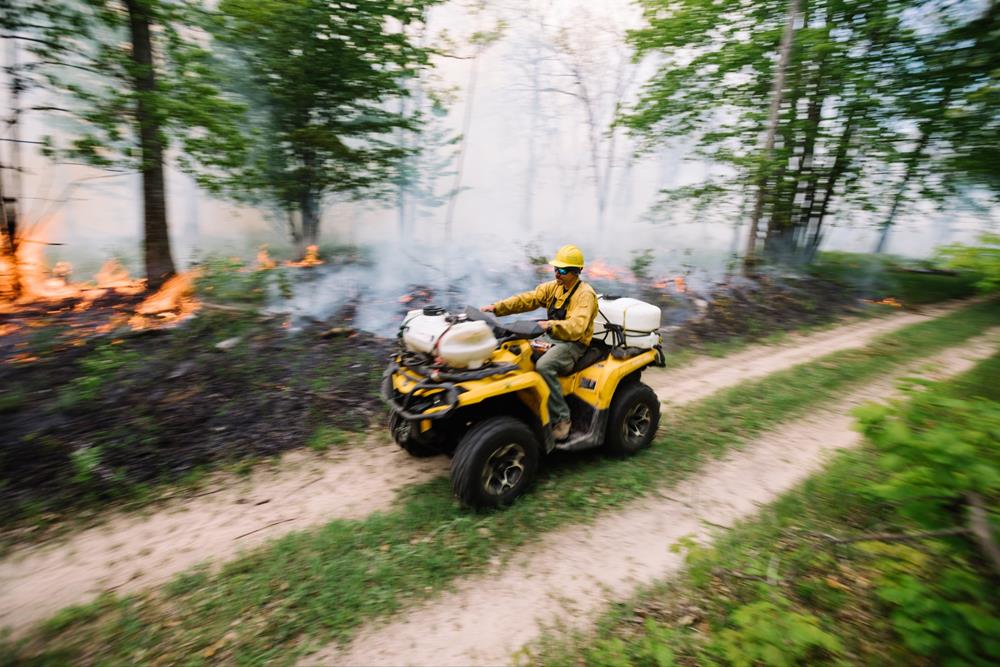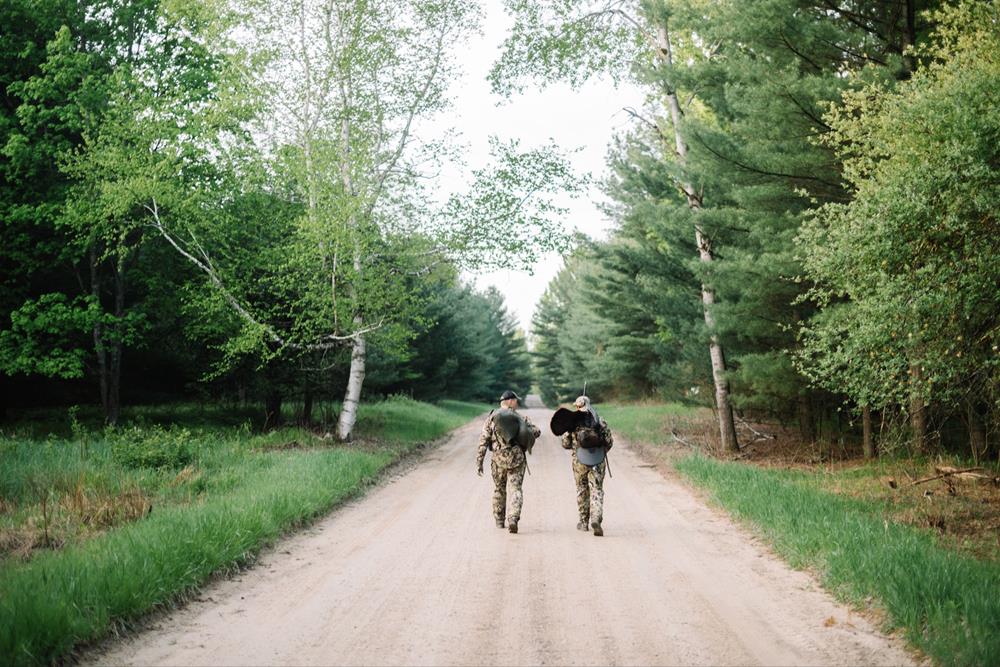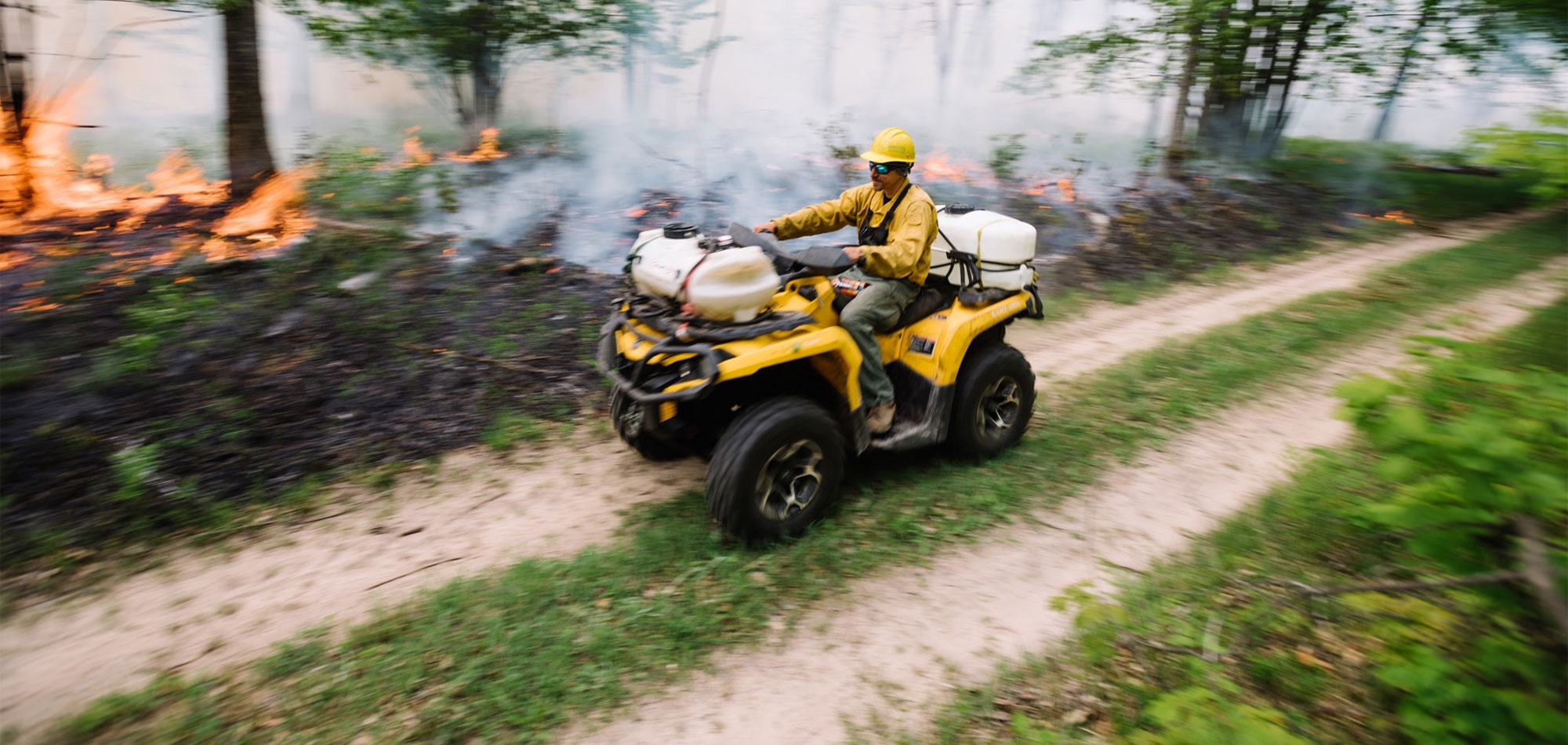From the trees across the clearing, a lone Tom gobbles like a madman.
It’s six a.m. here where Michigan woods transition into oak savanna, and the springtime sunrise glints on dewy grass and the colorful blooms of wildflowers. A fire burned through this spot last May; a year’s worth of growth has taken place since.
Jonathan Wilkins hunkers behind a tree, 12-gauge in hand. Behind him Ryan Boyer strikes a call. This goes on for minutes.
“I see just the very top of a red head,” Wilkins says. “The Tom and two hens come walking in on a line, just looking around. He steps out into an opening, and I slowly shoulder my shotgun. It was a beautiful morning, clear and crisp. All the memories are so vivid.”

With a tag filled, Wilkins, a SITKA Ambassador, and Boyer, District Biologist for the National Wild Turkey Federation, returned to the task at hand: habitat restoration through controlled burning as part of a SITKA Ecosystem Grant in Collaboration with the NWTF.
Like much of North America, this land in the Baldwin White Cloud Ranger District of Michigan’s Huron Manistee National Forest was once largely an oak savanna ecosystem, a transitional habitat consisting of grassland and mature oaks. These savannas were the ideal habitat for wildflowers and pollinators, deer and bear, insects, reptiles, turkeys, and more. Regular wildfires and Native American cultural burning kept these ecosystems in perfect balance, removing understory to keep the creeping pine and hardwood forests from encroaching too far into the grasslands.

In collaboration with the U.S. Forest Service, the NWTF and private landowners, this grant aims to restore much of this habitat through timber removal, controlled burns, and grass and wildflower seeding. The aim is to create large contiguous corridors of oak savanna across both private and public land. This year’s burning is adjacent to last year’s burns, connecting the patchwork of restored savanna.

Not just for the benefit of turkey hunters, these projects are helping to save the endangered Karner blue butterfly, which relies on the wild lupine that grows here and the threatened eastern massasauga rattlesnake that thrives in this habitat. The caterpillars that thrive in oak savannas feed numerous species of songbirds and make up as much as 90% of the diet of young turkey poults. According to Boyer, turkeys and other wildlife respond to this restoration work almost immediately, often when the ashes are still smoldering.
“I’ve come across black bears on these project sites and more whitetail deer than I can count,” Boyer says. “I’ve run into deer hunters on these sites, and when they see the wildflowers come back up they assume it’s a food plot we’ve put on it. In essence, they’re absolutely right. These are native wildflowers and native grasses that provide really high calorie levels and nutritional value that far and above exceeds anything that we could put in as a food plot variety.”
For Wilkins, the whole experience exemplifies the full-circle nature of hunting. Killing a turkey in a place that had been burned a year ago, and then going out to do some more burning helps him understand the regenerative nature of the world around him.

Projects like this “…contribute to that idea of a hunter as a steward participating in this holistic cycle,” Wilkins says. “You're helping to create natively informed habitat for those species, and not just our target species. This project is good for everything living there. Hunting where it had been burned and harvesting a really beautiful turkey. It was perfect; you couldn’t have written that script any better.”
For Wilkins, turkey hunting represents his favorite aspects of both big game and waterfowl hunting. He enjoys being mindful of movement, sneaking and chasing like you would stalking bear or deer. And he enjoys the communicative nature of it—talking to the birds and becoming part of their world.
But perhaps his favorite part of a springtime turkey hunt is the habitat itself. He so often associates hunting with the time of year of drab colors and skeletal trees, but a spring turkey hunt is the opposite of that.
“It’s just beautiful,” he says. “It’s everything coming back, just as vibrant as green can get. It’s just rad, man. It’s a nice way to take a breath after winter.

